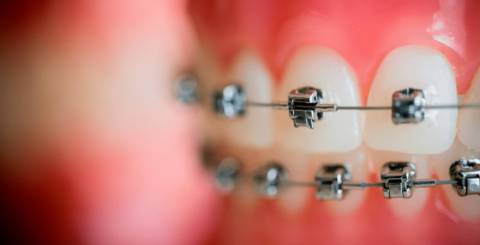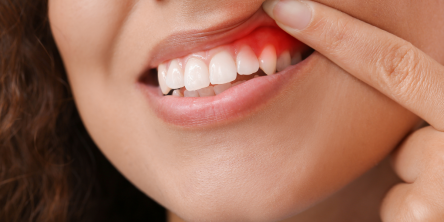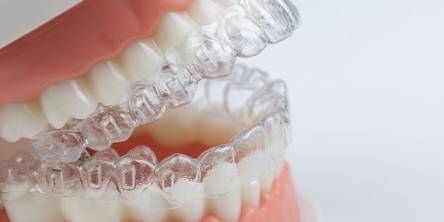9 Facts About Damon Braces That You Should Be Aware Of

Damon braces have gained popularity in orthodontic treatment because of their innovative design and efficiency in correcting tooth misalignments. While traditional braces have long been the preferred option, Damon braces provide a more comfortable and barely noticeable alternative. In this article, we will explore nine essential facts about Damon braces that you should be aware of before considering them as a treatment option.
1. Self-ligating system
Damon braces are an orthodontic system that self-ligates. Unlike typical braces, which use elastic ties to keep the wires in place, Damon braces fasten the wires via a sliding mechanism. This allows adjustment and avoids the need for frequent orthodontic appointments for tightening.
2. Shorter treatment time
Damon braces often result in a shorter entire treatment period as compared to traditional braces. The self-ligating design provides mild, continuous tooth movement, which can aid in the alignment process. While the duration of treatment varies according to individual situations, many patients report a decrease in treatment time.
3. Enhanced comfort
Damon braces are more pleasant to wear than traditional braces because they have rounded curves and a sleek shape. The lack of elastic ties also decreases friction and strain on the teeth and gums, making orthodontic treatment more comfortable.
4. Improved oral hygiene
Maintaining good dental hygiene is critical throughout orthodontic treatment, and Damon braces make this task simpler. Because there are no elastic ties to trap food particles, brushing and flossing become less complicated. This reduces the likelihood of plaque accumulation, tooth decay, and gum disease, providing better oral health during treatment.
5. Minimal adjustments are required
Traditional braces require regular adjustments to tighten the elastic ties and keep consistent pressure on the teeth. Damon braces, on the other hand, require fewer modifications since they use a self-ligating technology. This results in fewer visits to the orthodontist, which reduces annoyance and saves patients time.
6. Wide range of cases
Damon braces are adjustable and may be used to address many different kinds of orthodontic disorders, such as crowded or crooked teeth, gaps, overbites, underbites, and crossbites. Damon braces may typically provide successful and consistent treatment for mild or more severe tooth misalignments.
7. Aesthetically pleasing
Damon braces are a more aesthetically acceptable solution for people who are concerned about the look of standard metal braces. They are available in both metal and clear ceramic styles, letting patients select the type that best matches their particular requirements. The Damon ceramic braces are quite discrete, matching the natural color of the teeth.
8. Minimal discomfort
Damon braces use moderate forces and are intended to reduce pain throughout the treatment procedure. The self-ligating method eliminates the need for tightening, as well as the pressure associated with conventional braces. Damon braces are a more comfortable option for many people.
9. Retention phase
When your Damon braces treatment is over, it is critical that you use the retainers prescribed by your orthodontist. Retainers act to keep your teeth in their right place and prevent them from moving back to their original locations. To ensure long-term outcomes, the retention phase is a key aspect of the successful treatment.
The bottom line
Damon braces are a modern and effective alternative to traditional braces, making orthodontic treatment simpler, more convenient, and visually appealing. Damon braces have grown in popularity among those looking for a straighter smile because of their self-ligating mechanism, shorter treatment periods, greater convenience, and improved dental hygiene.
Whether you have minor or severe teeth misalignments, consultation with an orthodontist will help you evaluate if Damon braces are right for you. Remember that a great smile improves not only your look but also your oral health and general well-being.
Similar Articles
Ever caught yourself hiding behind your hand during a good laugh? Or dodging the camera at family gatherings? Those small chips, stubborn stains, or awkward gaps in your teeth can chip away at your confidence year after year.
When most people think about straightening their teeth, they envision traditional metal braces. However, because of recent advances in orthodontics, there are now more discreet, pleasant, and efficient solutions available.
Healthy gums not only ensure a beautiful smile but are also essential for overall oral health. However, conditions often arise that require surgical intervention in addition to dental treatment.
A tight booking calendar, a last-minute casting call, and a grin that has to look flawless by Friday—life as a Harlem creative rarely leaves space for dental upgrades
Gingivitis is an inflammation of the gums caused by the accumulation of plaque and bacteria.
Curious about Invisalign but unsure if it's the appropriate treatment option for you? You are in the right place. We are the experts in clear aligner orthodontic systems
A missing tooth is not only an aesthetic problem but can also affect overall oral health.
A snow-white smile has been a symbol of health, self-confidence, and success. For this reason, teeth whitening is one of the most popular procedures in dentistry. But not everything is as simple as it might seem at first glance
In the age of social media, TikTok has quickly become a platform where trends are born and shared at lightning speed









